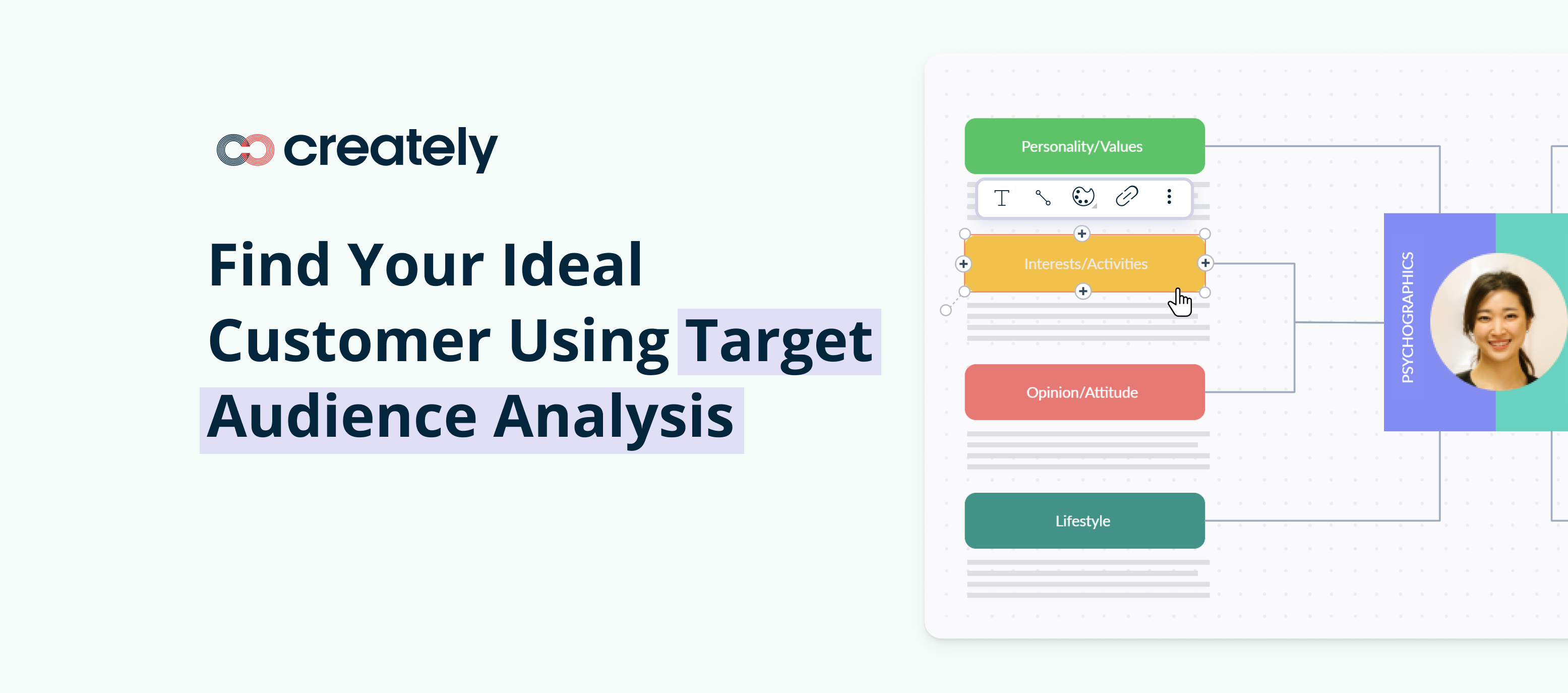Social Media Marketing Campaign: Unleashing the Power of Online Engagement
Social media marketing has emerged as a powerful tool in the digital landscape, enabling businesses to connect with their target audience on a global scale. A social media marketing campaign is a strategic and coordinated effort to achieve specific business goals using one or more social media platforms. It goes beyond regular day-to-day social media activities by focusing on amplifying brand messages, engaging with the audience, and driving desired actions.
In this article, we will unleash the Power of Online Engagement through the use of social media marketing campaigns.
What is Social Media Marketing Campaign?
A social media marketing campaign can be defined as a structured and purposeful approach to leveraging social media platforms to promote a brand, product, or service. It involves planning, executing, and monitoring marketing strategies that are tailored to the unique features and dynamics of each social media platform.
Importance of Social Media Marketing in Today’s Digital Landscape
In today’s interconnected world, social media has transformed the way businesses engage with their audience. Here are some key reasons why social media marketing is essential:
- Reach and Visibility: Social media platforms have billions of active users, providing businesses with unparalleled access to a vast audience. With effective social media marketing, businesses can significantly expand their reach and visibility.
- Targeted Advertising: Social media platforms offer sophisticated targeting options, allowing businesses to reach their ideal customers based on demographics, interests, behaviors, and more. This precision targeting enhances the effectiveness of marketing campaigns.
- Brand Building and Reputation Management: Social media enables businesses to create and strengthen their brand image by sharing compelling content, engaging with customers, and showcasing their unique value proposition. It also provides an avenue for reputation management and timely response to customer feedback.
- Customer Engagement and Relationship Building: Social media allows direct and real-time interaction with customers, fostering engagement, trust, and loyalty. Businesses can listen to their audience, provide personalized support, and build long-lasting relationships.
Benefits and Objectives of a Social Media Marketing Campaign

A well-executed social media marketing campaign can yield a range of benefits and help businesses achieve their marketing goals. Some common objectives include:
- Increased Brand Awareness: By reaching a larger audience and creating engaging content, businesses can enhance brand visibility, recognition, and recall.
- Website Traffic and Conversions: Social media campaigns can drive targeted traffic to websites, landing pages, or specific product pages, leading to increased conversions, such as sales, sign-ups, or inquiries.
- Community Building: Building an active and engaged community around a brand is crucial for fostering brand loyalty, advocacy, and word-of-mouth marketing.
- Market Research and Insights: Social media campaigns provide opportunities to gather valuable market research, understand customer preferences, and gain insights into industry trends.
- Promotion of Products or Services: Social media marketing campaigns enable businesses to showcase their products or services, highlight unique features, and communicate promotional offers effectively.
Key Components of a Social Media Marketing Campaign
In a successful social media marketing campaign, several key components come together to drive results and achieve business objectives. Understanding and effectively implementing these components is essential for a campaign’s success.
A. Defining Goals and Objectives
Setting clear and measurable goals is crucial for a social media marketing campaign. By establishing specific objectives, businesses can focus their efforts and track the success of their campaigns. Some important points to consider are:
- Importance of Setting Clear and Measurable Goals: Clearly defined goals provide direction and purpose for a social media campaign. They help align marketing efforts with broader business objectives and enable effective evaluation of campaign success.
- Examples of Common Goals in Social Media Marketing Campaigns: Goals may vary depending on the nature of the business and its marketing objectives. Common goals include increasing brand awareness, generating leads, driving website traffic, enhancing customer engagement, and boosting sales.
B. Target Audience Analysis

Understanding the target audience is vital for crafting a compelling social media campaign. By analyzing demographics, interests, and behaviors, businesses can tailor their messaging and content to resonate with their audience. Consider the following:
- Significance of Understanding the Target Audience: A deep understanding of the target audience allows businesses to create content that is relevant, engaging, and persuasive. It helps in identifying the right platforms, communication styles, and content formats that appeal to the audience.
- Techniques for Conducting Effective Audience Research: Various methods can be employed to gain insights into the target audience. These include conducting surveys, leveraging social media analytics to analyze audience demographics and preferences, and gathering customer feedback through interactions and online reviews.
C. Platform Selection
Choosing the appropriate social media platforms is essential for reaching the target audience effectively. Each platform has its unique features and user demographics. Consider the following:
- Overview of Popular Social Media Platforms: Platforms like Facebook, Instagram, Twitter, LinkedIn, and Pinterest offer distinct advantages and cater to different user demographics. Understanding their features, user base and engagement levels is crucial in selecting the most suitable platforms for the campaign.
- Considerations for Selecting Platforms: Factors to consider include the target audience’s preferred platforms, the nature of the campaign’s content, and the marketing objectives. Choosing platforms where the target audience is most active and receptive to the campaign’s message increases the chances of success.
D. Content Strategy
Developing a well-thought-out content strategy is key to capturing the attention and engagement of the target audience. A strong content strategy involves the following:
- Crafting Compelling and Engaging Content: Content should align with the campaign’s goals and resonate with the target audience. It should be informative, entertaining, visually appealing, and shareable. Various content formats, such as text, images, videos, and infographics, can be utilized based on platform suitability.
- Maintaining a Consistent Brand Voice and Identity: A consistent brand voice helps in establishing brand recognition and building trust with the audience. The content should reflect the brand’s values, personality, and messaging across all social media channels.
E. Implementation and Execution
Implementing and executing the campaign requires careful planning, organization, and coordination. Consider the following points:
- Creating a Detailed Timeline and Action Plan: A well-defined timeline and action plan ensure that the campaign progresses smoothly and stays on track. It includes scheduling content, setting milestones, and assigning responsibilities to team members involved in the campaign.
- Leveraging Social Media Management Tools: Social media management tools like Hootsuite, Buffer, and Sprout Social can streamline the process of scheduling and monitoring posts. These tools offer features for content planning, post automation, and analytics tracking.
- Collaborating with Influencers and Brand Ambassadors: Partnering with influencers and brand ambassadors can amplify the campaign’s reach and credibility. Engaging influential individuals who align with the brand’s values and target audience can result in increased exposure and engagement.
By incorporating these key components into a social media marketing campaign, businesses can maximize their chances of success. Each component contributes to the overall effectiveness of the campaign, allowing businesses to connect with their target audience, drive engagement, and achieve their marketing goals.
Effective Strategies for Social Media Marketing Campaigns

A well-executed social media marketing campaign requires effective strategies to engage the audience, reach the target market, and achieve desired results. The following strategies can help businesses maximize the effectiveness of their campaigns:
A. Building and Growing an Engaged Community
To create a thriving social media community, it’s important to attract and retain followers while fostering meaningful interactions. Consider the following strategies:
- Strategies for Attracting and Retaining Followers: Engage with your target audience by consistently posting high-quality content that aligns with their interests. Use eye-catching visuals, compelling captions, and relevant hashtags to increase visibility. Run contests, giveaways, and exclusive promotions to incentivize audience engagement and encourage them to follow your social media accounts.
- Encouraging User-Generated Content and Fostering Meaningful Interactions: Encourage your followers to create and share content related to your brand. User-generated content fosters a sense of community and authenticity. Respond promptly to comments, messages, and mentions to show that you value your audience’s opinions and actively engage with them.
B. Paid Advertising and Targeting
Paid advertising on social media platforms provides opportunities to reach a wider audience and increase campaign effectiveness. Consider the following strategies:
- Overview of Paid Advertising Options: Social media platforms offer various advertising formats, such as sponsored posts, display ads, video ads, and carousel ads. Each platform has its own targeting options, budgeting methods, and ad placements. Research the options available on platforms relevant to your target audience.
- Techniques for Effective Targeting: Leverage the targeting capabilities of social media platforms to reach the most relevant audience for your campaign. Define your target audience based on demographics, interests, behaviors, and location. Utilize advanced targeting options, such as lookalike audiences, to expand your reach to similar users who are likely to be interested in your offerings.
C. Influencer Marketing
Influencer marketing involves partnering with individuals who have a significant following and influence within your target audience. Consider the following strategies:
- Exploring the Power of Influencer Collaborations and Partnerships: Identify influencers who align with your brand values and have an engaged audience. Collaborate with them to create content or promote your products/services. Influencers can help increase brand awareness, reach new audiences, and build credibility.
- Identifying Suitable Influencers and Establishing Mutually Beneficial Relationships: Conduct thorough research to identify influencers who have genuine engagement, relevant content, and a loyal following. Evaluate their alignment with your brand and negotiate mutually beneficial partnerships. Provide influencers with clear campaign guidelines and objectives to ensure a consistent brand message.
D. Social Listening and Monitoring
Social listening and monitoring involve tracking conversations and mentions related to your brand across social media platforms. Consider the following strategies:
- Utilizing Social Listening Tools: Use social listening tools to monitor brand mentions, hashtags, and industry keywords. Understand customer sentiment, identify emerging trends, and gather feedback to refine your campaign strategy. These tools provide valuable insights into the effectiveness of your campaign and help you respond promptly to customer feedback.
- Monitoring Campaign Performance and Making Data-Driven Adjustments: Regularly monitor key performance metrics such as reach, engagement, click-through rates, and conversions. Analyze the data to identify strengths and weaknesses, and make data-driven adjustments to optimize your campaign. Continuously test different elements, such as ad copy, visuals, and targeting, to improve performance.
E. Measuring Success and ROI
Measuring the success of a social media marketing campaign is essential to understand its impact and optimize future efforts. Consider the following strategies:
- Key Metrics to Track: Track metrics such as engagement rate, follower growth, website traffic, conversions, and customer acquisition cost. These metrics provide insights into the campaign’s performance and help assess its effectiveness in achieving the defined goals.
- Understanding Return on Investment (ROI): Calculate the ROI of your social media campaign by comparing the campaign’s cost to the value generated. Consider factors such as the revenue generated, customer lifetime value, and the overall impact on brand perception. Understanding the ROI helps in allocating resources effectively and making informed decisions for future campaigns.
By implementing these effective strategies, businesses can enhance their social media marketing campaigns and achieve their goals. Each strategy contributes to building an engaged community, targeting the right audience, leveraging influencers, monitoring campaign performance, and measuring success for future improvements.
Case Studies: Successful Social Media Marketing Campaigns
Real-world examples of successful social media marketing campaigns provide valuable insights into effective strategies, tactics, and outcomes. Let’s examine a few case studies that showcase impactful campaigns:
1. Nike’s “Just Do It” Campaign

Nike’s “Just Do It” campaign is a classic example of a successful social media marketing campaign. They leveraged social media platforms to inspire and engage their target audience. The campaign’s strategies and outcomes include:
- Strategy: Nike crafted a powerful message around the concept of determination and overcoming challenges. They utilized storytelling and emotional appeal to connect with their audience.
- Tactics: Nike encouraged users to share their personal stories and achievements using the hashtag #justdoit. They collaborated with athletes, influencers, and celebrities to amplify the message.
- Outcome: The campaign generated significant user-generated content, leading to increased brand engagement and awareness. Nike experienced a boost in sales and successfully reinforced their brand image as a symbol of inspiration and athleticism.
2. Coca-Cola’s “Share a Coke” Campaign

Coca-Cola’s “Share a Coke” campaign aimed to create personalized connections with consumers. The campaign’s strategies and outcomes include:
- Strategy: Coca-Cola replaced its logo with popular names on its bottles and cans, encouraging people to share a Coke with friends and loved ones. They capitalized on the power of personalization and social sharing.
- Tactics: Coca-Cola launched a social media campaign using the hashtag #shareacoke. They encouraged users to share photos and stories of their personalized Coca-Cola bottles, fostering user-generated content.
- Outcome: The campaign went viral, driving immense social media engagement and user participation. Coca-Cola experienced a notable increase in sales, brand sentiment, and consumer loyalty. The campaign’s success extended beyond social media, with consumers actively searching for personalized Coke bottles in stores.
3. Old Spice’s “The Man Your Man Could Smell Like” Campaign

Old Spice’s “The Man Your Man Could Smell Like” campaign is a memorable example of a humorous and viral social media marketing campaign. The campaign’s strategies and outcomes include:
- Strategy: Old Spice aimed to rebrand its product line and target a younger audience. They created humorous and entertaining content to grab attention and generate buzz.
- Tactics: Old Spice produced a series of engaging videos featuring a charismatic spokesperson. They encouraged users to interact and share their thoughts on social media platforms.
- Outcome: The campaign generated millions of views and shares across social media platforms. Old Spice experienced a significant increase in brand awareness, engagement, and sales. The campaign’s success led to further iterations and expanded marketing efforts.
These case studies demonstrate the power of creative storytelling, user-generated content, personalization, and humor in social media marketing campaigns. By studying successful campaigns, businesses can learn valuable lessons about effective strategies and adapt them to their own marketing efforts.
Conclusion
In summary, a social media campaign is a focused marketing effort that utilizes social media platforms to achieve specific business objectives. To ensure success, it’s crucial to set measurable goals and track metrics using tools like HootSuite, Social Mention, and Addictomatic. Maximize your campaign’s impact by implementing best practices: encourage user interaction, offer incentives, engage with your audience, promote across platforms, align your online presence, and monitor performance. Learn from successful case studies like Nike’s “Just Do It,” Coca-Cola’s “Share a Coke,” and Old Spice’s “The Man Your Man Could Smell Like” to create impactful and effective campaigns that drive engagement and achieve your goals.
